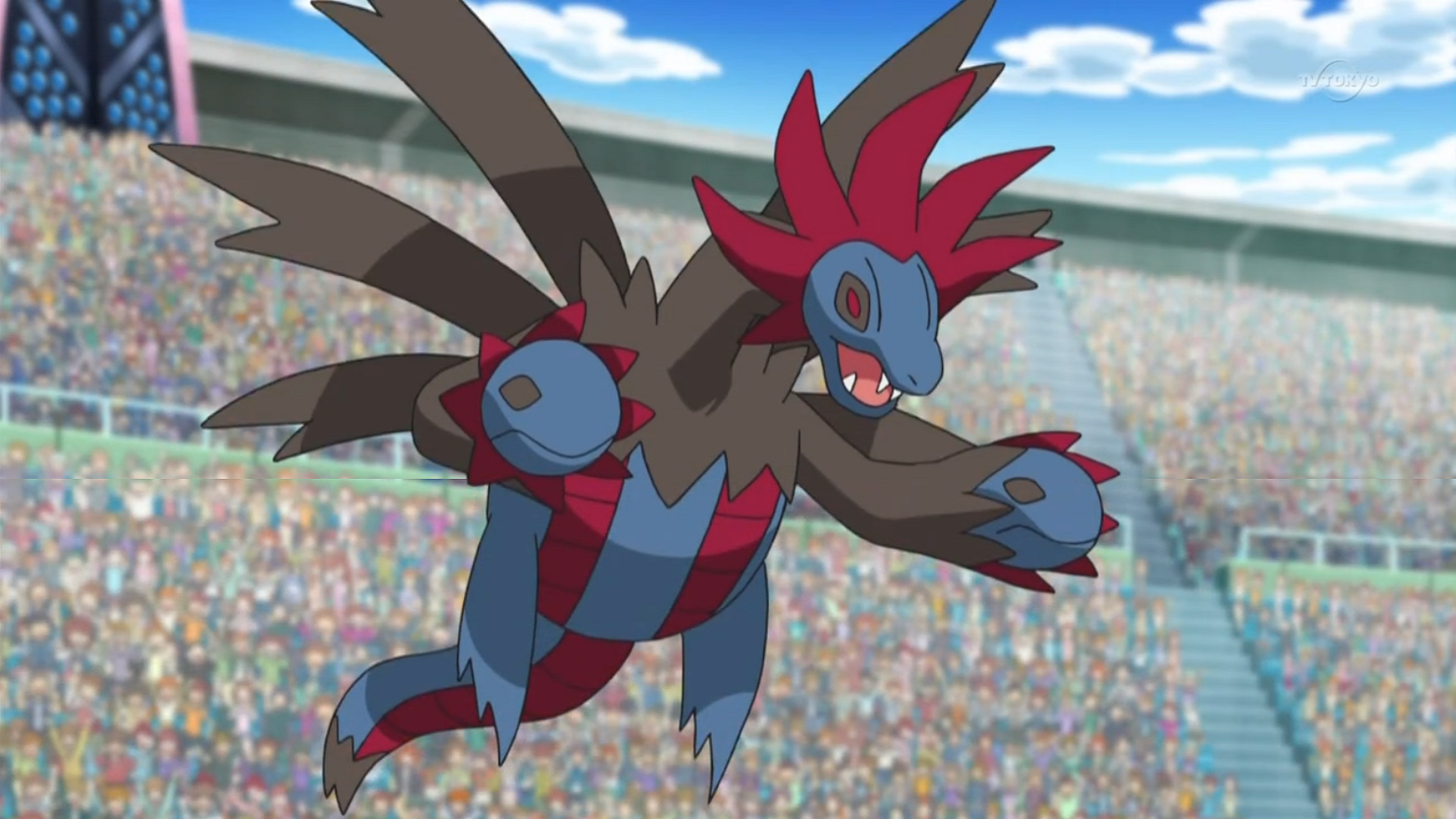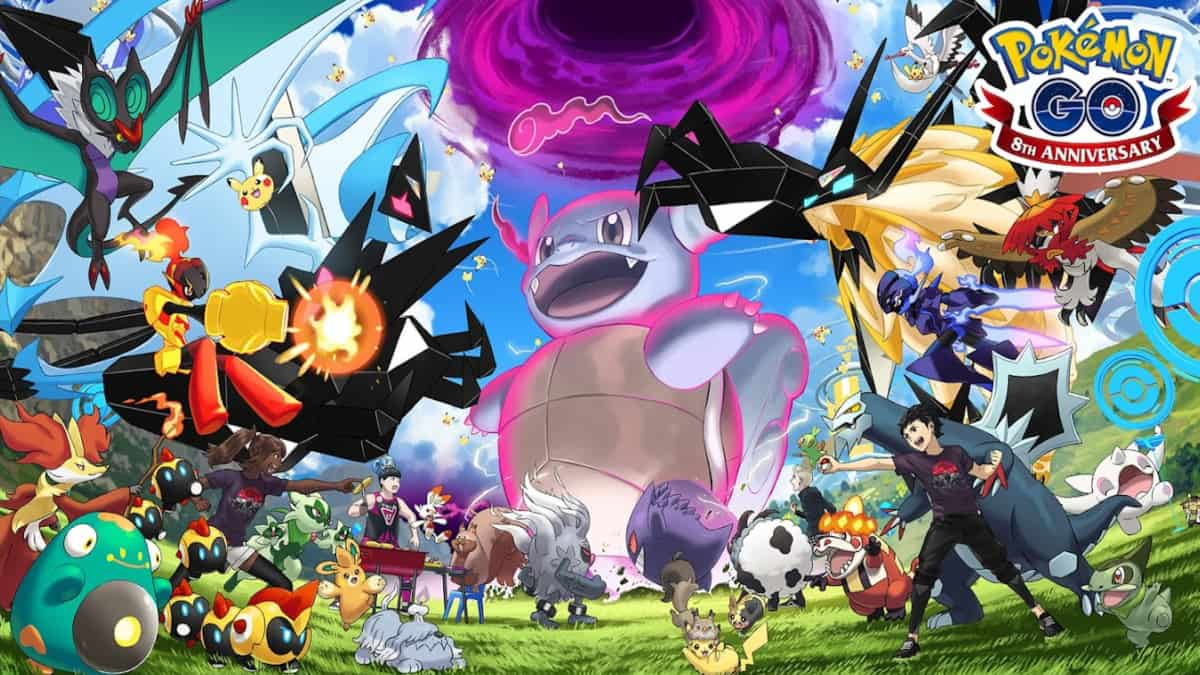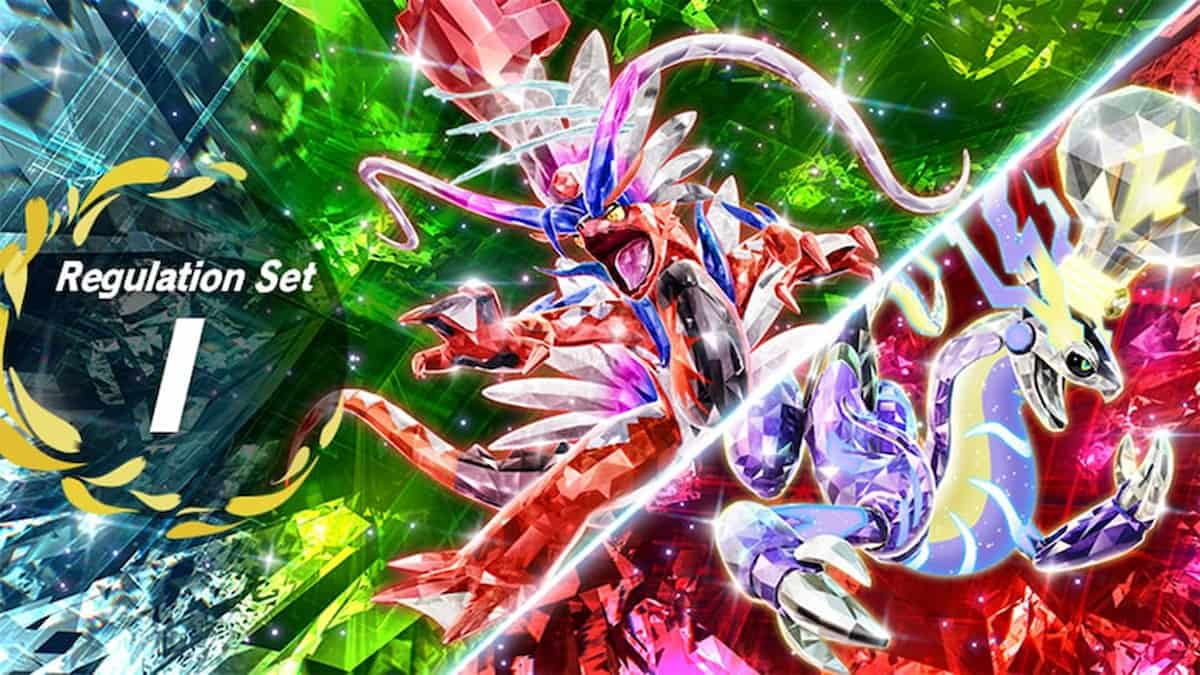Pokémon Scarlet and Violet had their first Regional-level tournament hosted by TPCI held in San Diego over the weekend, which players had been preparing for even before the new games were released, which was how long ago the tournament date was announced.
Season one of competitive VGC has been active since the beginning of December, and the metagame had developed quite a bit before the San Diego Regionals.
So going into the tournament, players were ready to face the tried-and-tested formulae of Pokémon that they had been seeing on the ranked ladder so far, only to face off against a bunch of strange techs and off-the-wall adaptations from players who have seemed to shift the meta in unforeseen ways.
Below, we’re going to discuss the various existing Pokémon that players have found new and ingenious methods to pilot them in, as well as ‘mons that emerged as surprising new threats.
Tatsugiri: Stretchy form + Dondozo
The Dondozo and Tatsugiri combo is probably one of the most metagame-warping Pokémon cores seen in a while for competitive Pokémon. If you don’t have at least two answers on your team for this oppressive duo, you’d be in hot water.
Analyzing the teams that top-cut the San Diego Regionals will lead you to realize that these compositions did in fact have multiple checks to Dondozo. While these players thought they had their Dondozo matchup all figured out, the Dondozo players were making their own meta adaptations.
Dondozo paired with Stretchy Tatsugiri saw quite the rise in usage in the tournament, with three Stretchy Tatsugiri-Dondozo cores making it to the top cut.
After Wolfe Glick’s (2016 World Champion) win on stream that got him into the top 16, he revealed in his interview that his reasoning behind Stretchy Tatsugiri was so that he could keep racking up Speed boosts on his Dondozo to the point where he could even outspeed his enemy’s Tailwind boost, going on to deal irreversible damage to his opponent’s team while cleaning up with his Pokémon in the back.
This is in contrast to the Curly Tatsugiri-Dondozo cores that were dominating in the past, which aim to rely on Dondozo and Tatsugiri to sweep the enemy’s team single-handedly when the opportunity arises.
Focus Energy Hydreigon
As we said, the Dondozo-Tatsugiri core is truly meta-warping, forcing players to teambuild while keeping the nightmarish duo in the forefront of their minds, which can lead to some pretty ingenious meta adaptations, one such adaptation being crit-happy Hydreigon.
Running Focus Energy on Hydreigon along with Scope Lens or Razor Fang made it so Hydreigon gets a 100 percent crit rate after a single Focus Energy. Critical hits in Pokémon go through stat boosts, which means that Dondozo’s Special Defense increase after ingesting Tatsugiri would be of no use since Hydreigon’s attacks such as Draco Meteor could outright ignore it.
Critical hits also ignore the user’s stat drops, which means running Focus Energy gives Hydreigon the added benefit of ignoring its own stat drops from Draco Meteor to continuously let it fire off 1.5 times damage-boosted attack even after getting its Special Attack dropped.
Non-Body Press Garganacl
The default mode the majority of players decided to pilot Garganacl in was the Iron Defense-Body Press set, which had Salt Cure and Recover on the last two move slots during the early Scarlet and Violet VGC meta. This was the standard set for Garganacl among the sparse usage that it got, but players began to adapt when they noticed Garganacl was really inconvenienced by the lack of Protect.
This led to a shift in playstyle where Garganacl did not rely on just itself to sweep the opponent’s team, but rather whittled down its opponents with Salt Cure to the point where its faster partner finished them off. Salt Cure along with Protect, Recover, and Wide Guard made Garganacl incredibly hard to remove, and with a defensive Tera type, Garganacl is unstoppable if piloted by the right player.
There were two Garganacl teams that got top eight in the San Diego Regionals, with one of them winning the tournament. Both Garganacl ran this particular set, but the tournament-winning one chose to run Tera Poison, which was used to mainly counter Glimmora and Toxic Spikes-Meowscarada while also resisting Fighting and Grass moves that it is originally weak against.
Mirror Herb Paldean Tauros
Now this one’s a creative meta-adaptation. Players were scratching their heads trying to figure out if Mirror Herb was really a useful item addition into the competitive Pokémon metagames moving forward and how exactly would it be utilized to its full potential.
Slapping on Mirror Herb onto an Intimidate ‘mon such as Paldean Tauros turns out to be a brilliant counter to Defiant Pokémon, a notable one being Kingambit. When Paldea Tauros activates Intimidate onto Kingambit, it will first lower Kingambit’s Attack by one stage before the latter gets its Attack boosted by two stages due to Defiant activating, giving Kingambit a net increase of one stage in its Attack.
Mirror Herb, however, only copies how many stages the opponent’s stats have increased by, and not the drops, which means that Paldean Tauros gets a two-stage increase in its Attack, letting it KO Kingambit immediately with a Fighting-type move and proceeding to wreak havoc on the rest of the opponent’s team.
Non-Population Bomb Maushold
Population Bomb is one of the strongest moves in the game, if not the outright strongest move. With the Wide Lens item and Maushold’s Technician ability, you are almost guaranteeing 10 whole hits, each 30 base power, totaling a move with 300 base power, and that’s before factoring in STAB or Normal Tera.
So of course, something this oppressive was going to induce counterplay, such as the plethora of defensive ‘mons running Rocky Helmet, which made Maushold KO itself before the opponent could take all 10 hits.
In response to this adaptation, most Maushold in the tournament decided to run a fully supportive Friend Guard set, without even Population Bomb, and instead something like Super Fang. This disrupted many players’ calcs as Friend Guard buffed Maushold’s partners’ bulk while it could otherwise support with Follow Me and fast Encores.
Glimmora
Glimmora was another sleeper pick that was envisioned to pick up and do well in the San Diego regionals, with two different Glimmora teams making it to the top cut. Interestingly, both teams decided to run it with a Choice Specs set, although with different Tera types and movesets.
Glimmora has threatening damage output and incredibly wide coverage, but the main reason for its usage is that it gets access to its signature ability Toxic Debris. This was recognized to be an effective counter into Dondozo matchups, passively setting up Toxic Spikes while being able to deal massive amounts of damage at the same time.
This Rock and Poison dual-type also does not have to worry about its defensively cripping typing due to the presence of Terrastalization, with one of the Glimmora from the tournament running Tera Grass, letting it resist a bunch of its weaknesses while also ignoring Spore and Rage Powder from ‘mons like Amoonguss in addition to gaining a decent matchup into Dondozo.
Bulky Nasty Plot Gholdengo
It feels like it was just yesterday when we saw a horde of Choice Specs Gholdengo running amok on the ranked ladder and winning grassroots tournaments left and right. Cheese string man didn’t go anywhere, because let’s face it, Gholdengo’s pretty busted. But what did change is the dominant set that players decided to run it with.
While the winning team did feature a Choice Specs Gholdengo, the majority of players decided to run bulky Nasty Plot Gholdengo instead, a set that also let them run Protect as well. This set lets Gholdengo be much more flexible in the way that it is piloted, and since this ‘mon immediately gets a target on its back the moment it’s on the field, Gholdengo can simply bait the opponent and Protect instead of attacking, while setting up with Nasty Plot when the opportunity arises.
The item on these Gholdengo differed from team to team, however, with some players opting to run Life Orb for that increased burst of damage without the drawback of not being able to Protect and being locked into one move, while others ran Leftovers for sustained and consistent healing to increase its staying power.
Talonflame over Murkrow
In a surprising turn of events, Talonflame was seen a total of four times throughout the teams in the top 16, while Murkrow was not present in a single team within the top 16. What seemed like an omnipresent Pokémon so far in the series one metagame has now dropped in usage monumentally. How the mighty have fallen.
One reason for this was the change in Gholdengo sets. Since more Gholdengo were now running Nasty Plot instead of Choice Specs, there were fewer stat drops for Murkrow to Haze away. The second reason was Murkrow’s passivity, where other than the weak Brave Birds and unreliable Foul Plays, Murkrow really didn’t apply any pressure after it was done setting up Tailwind.
Talonflame, on the other hand, has amazing dual STABs and a better Attack stat than Murkrow while also having access to Prankster-Tailwind, and with a Life Orb—like how most players were running it—you simply could not ignore Talonflame after it was done setting up Tailwind.











Published: Jan 10, 2023 08:55 am